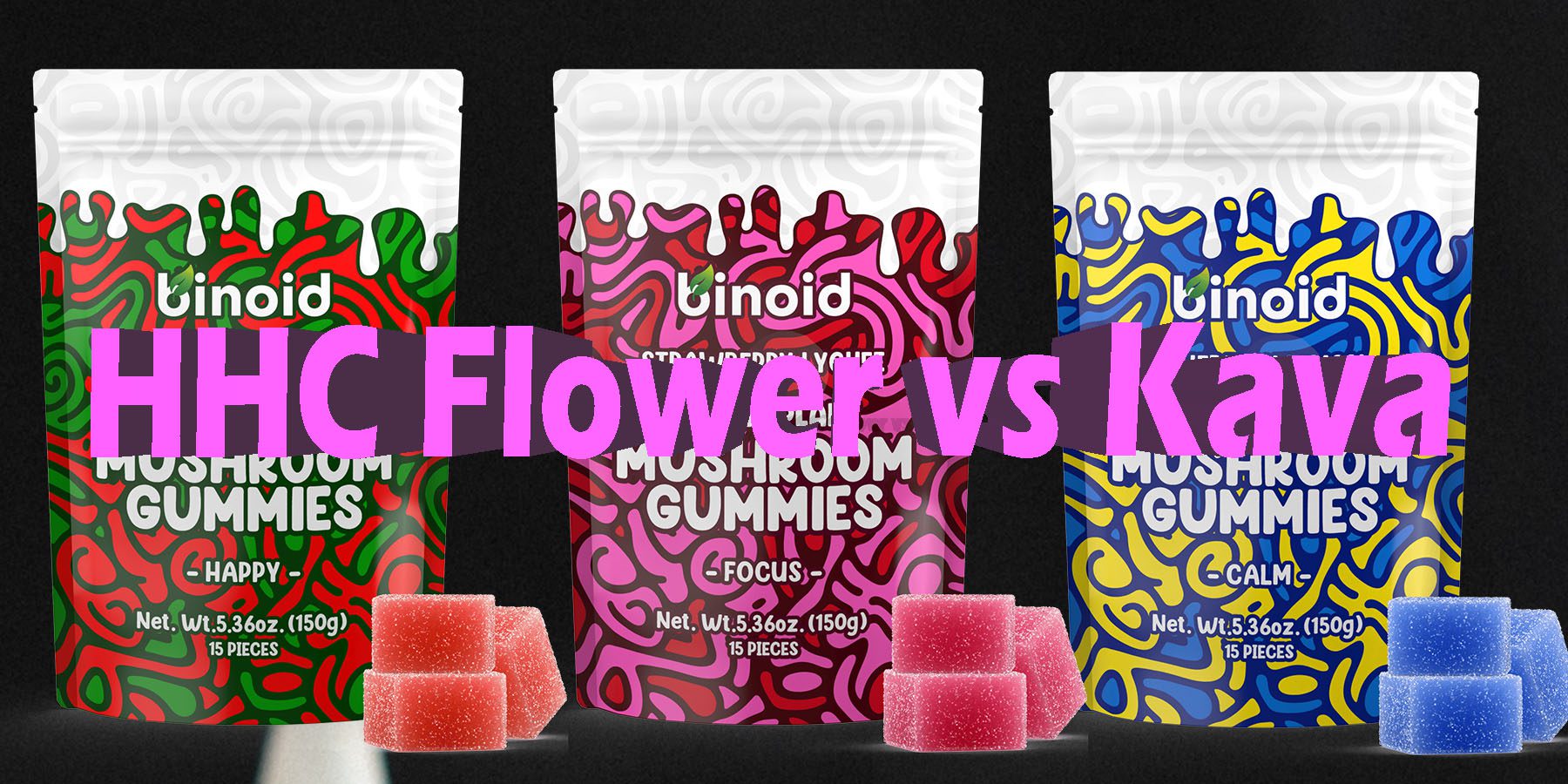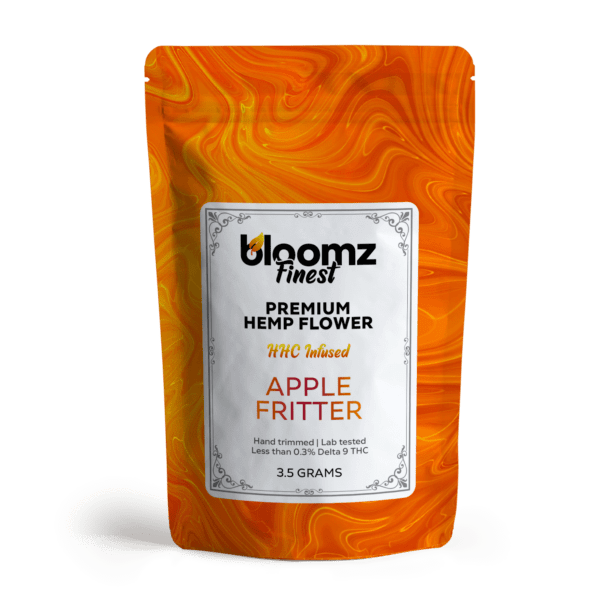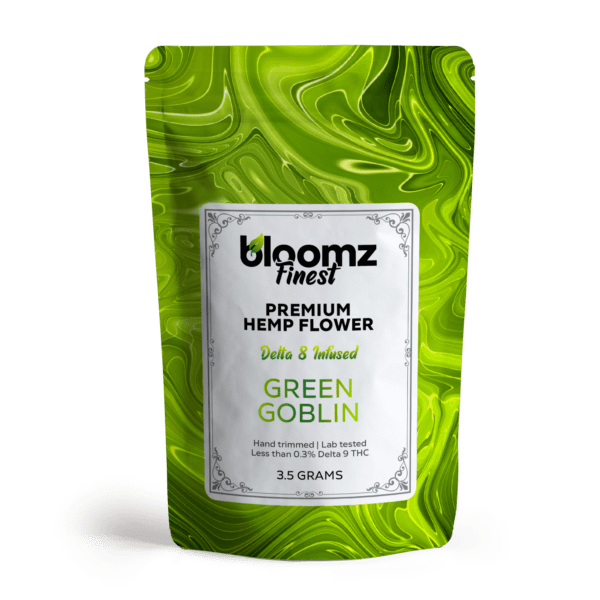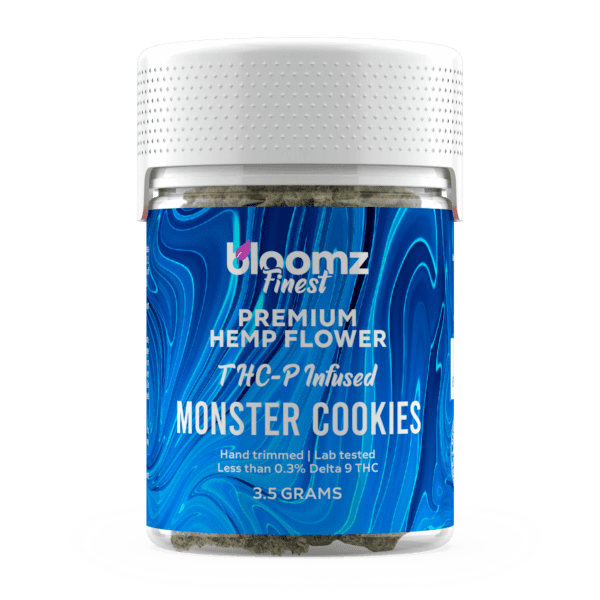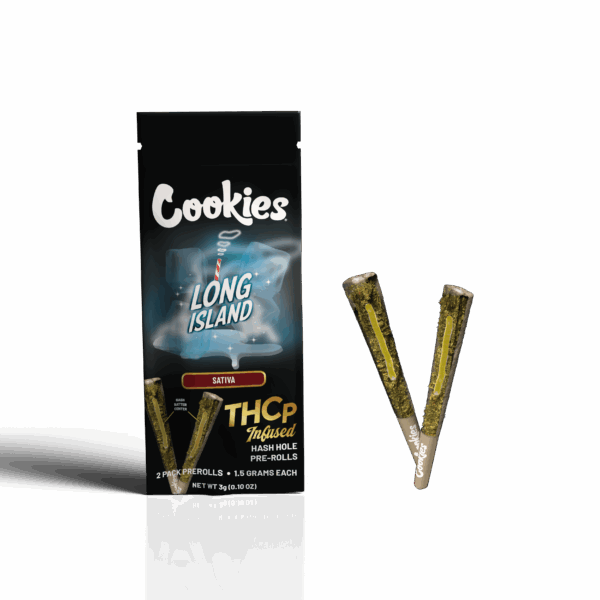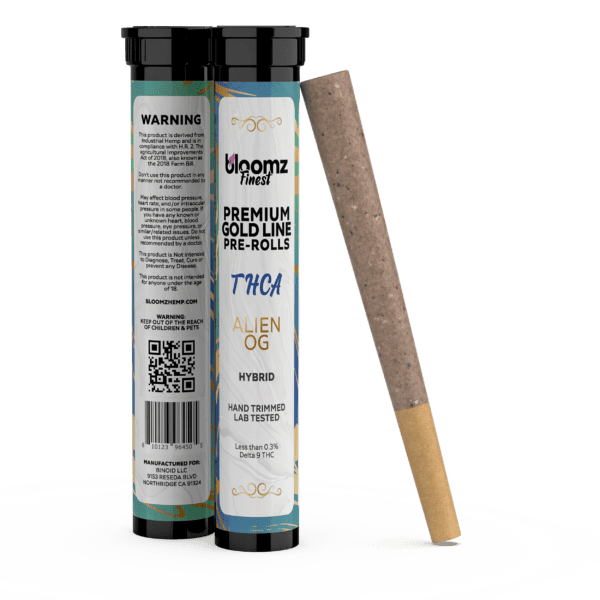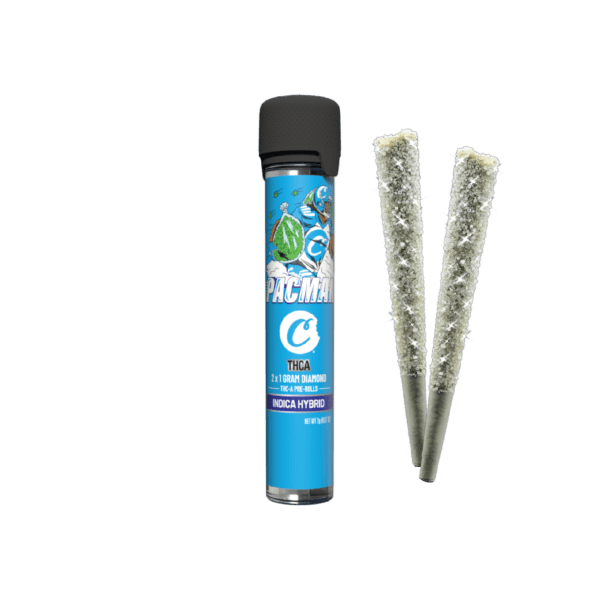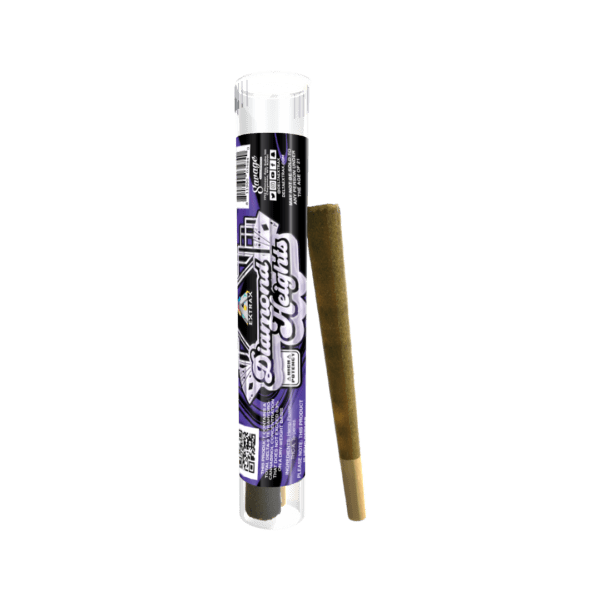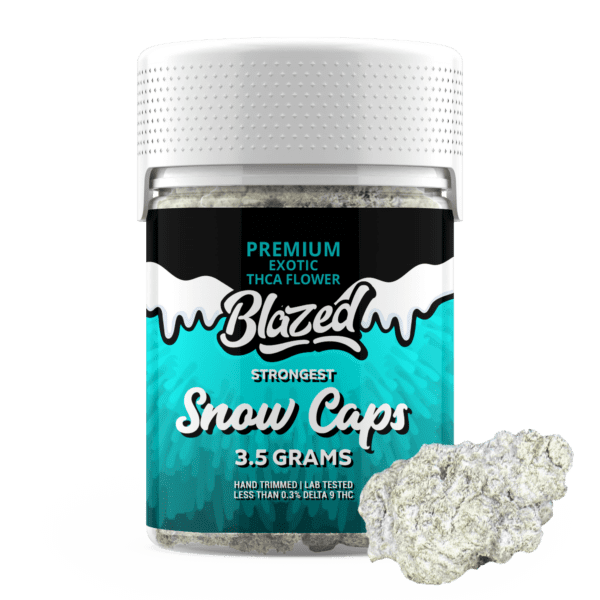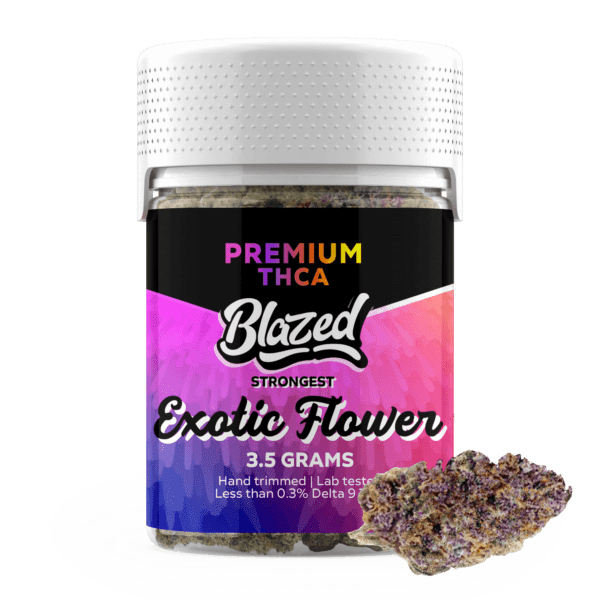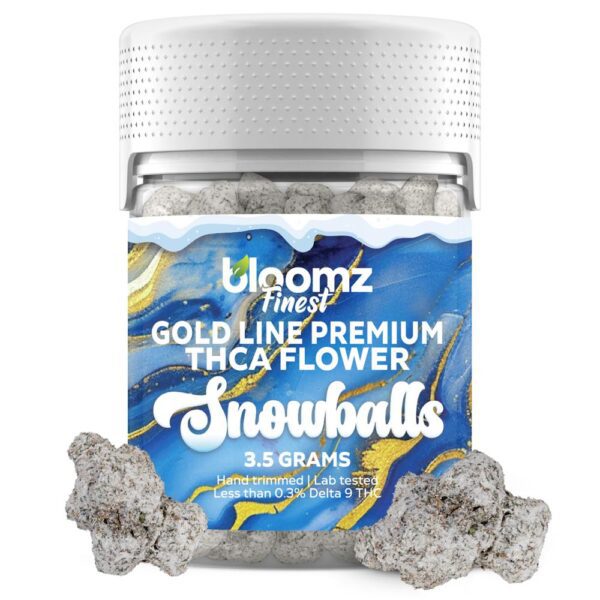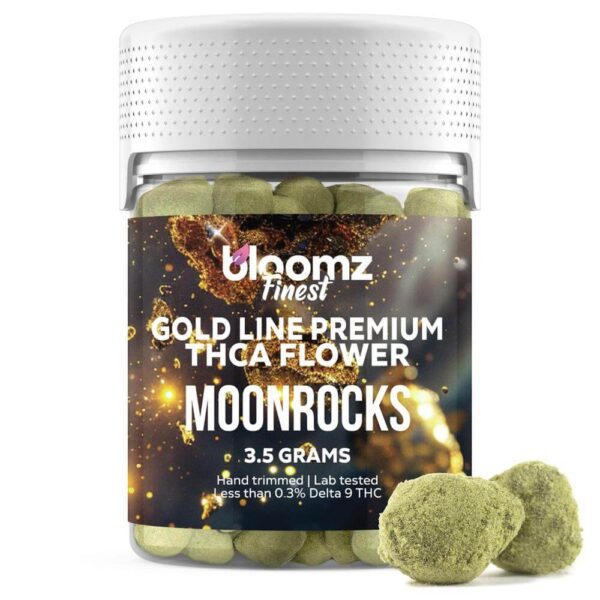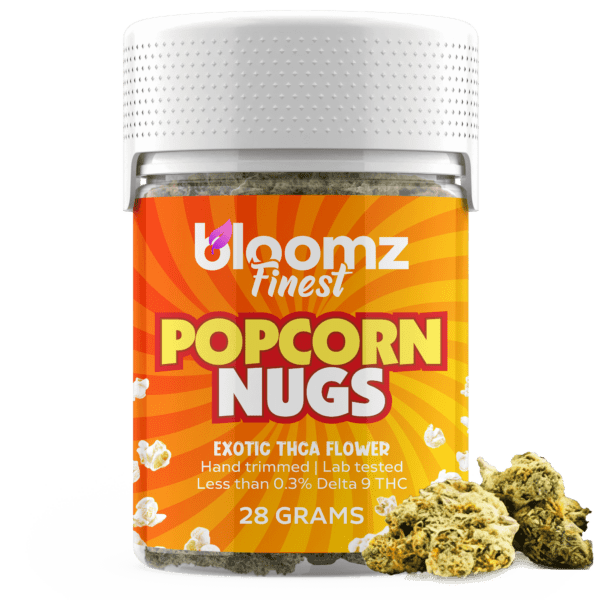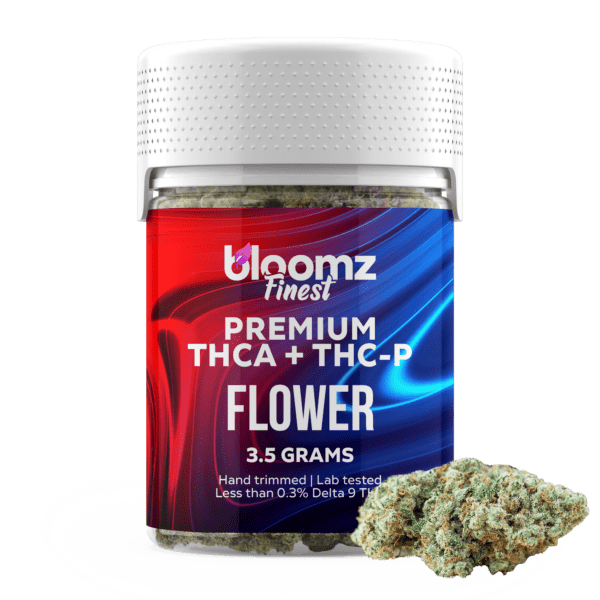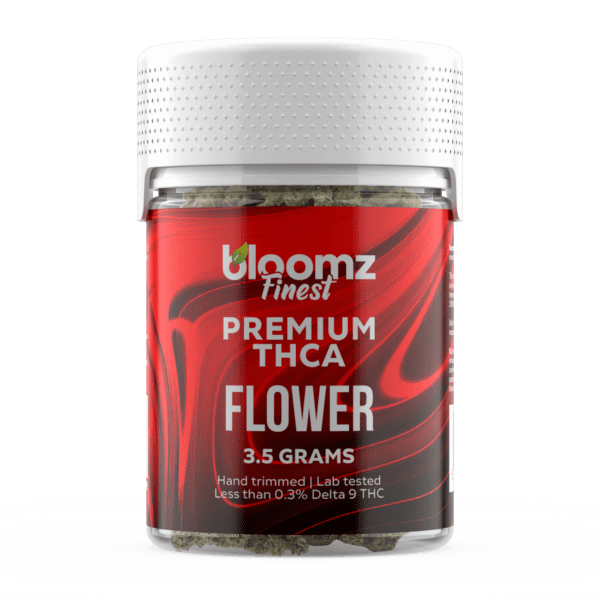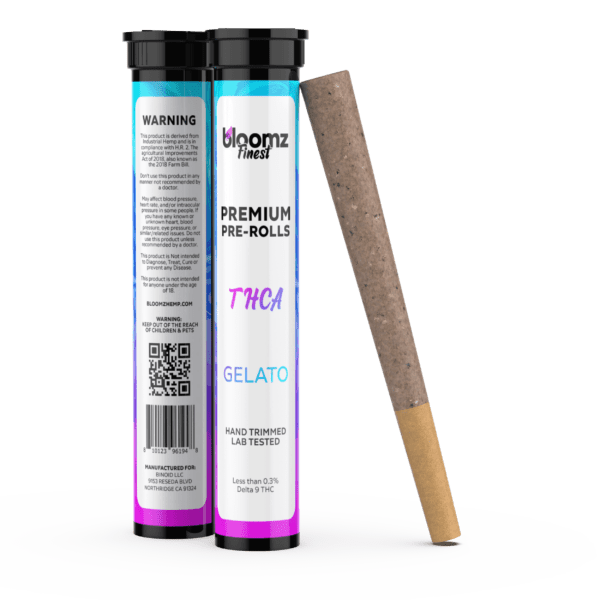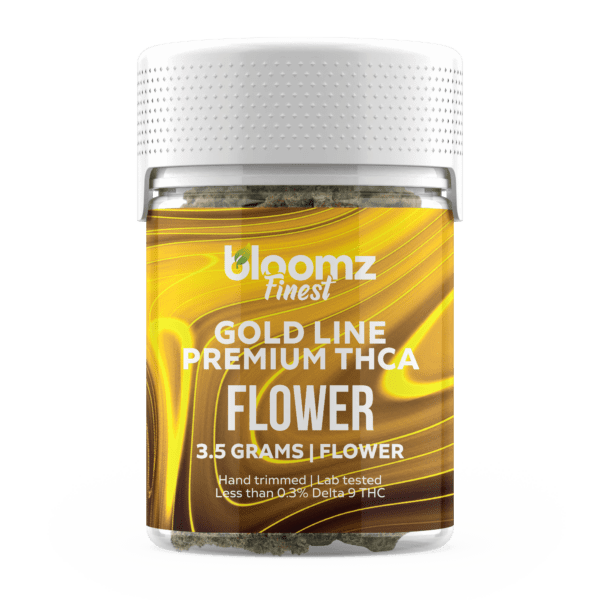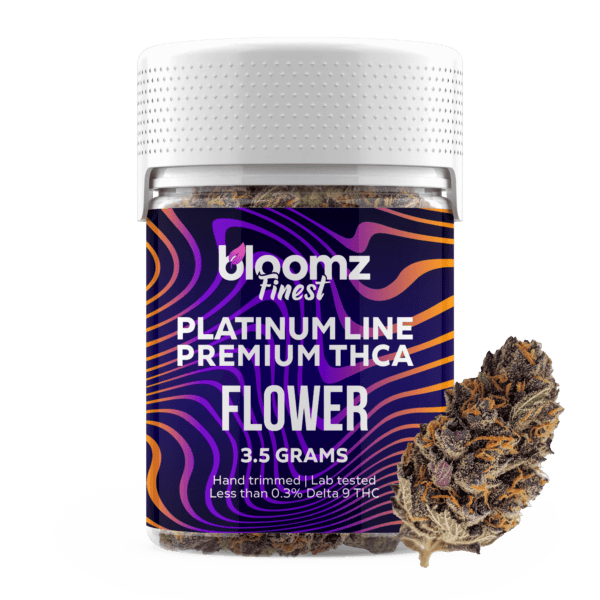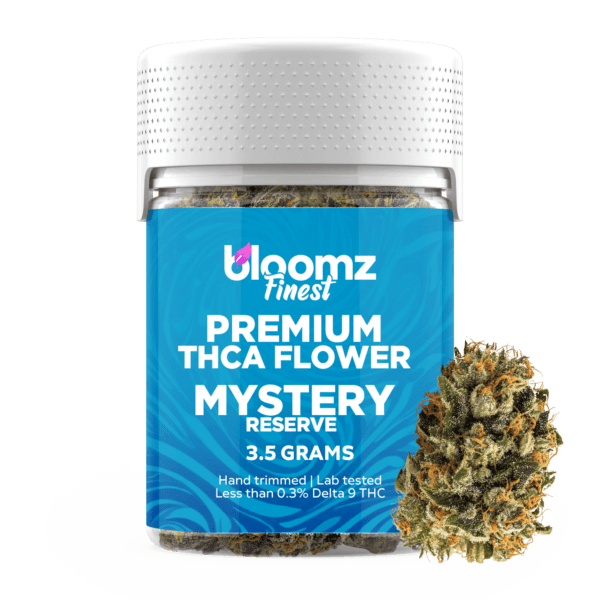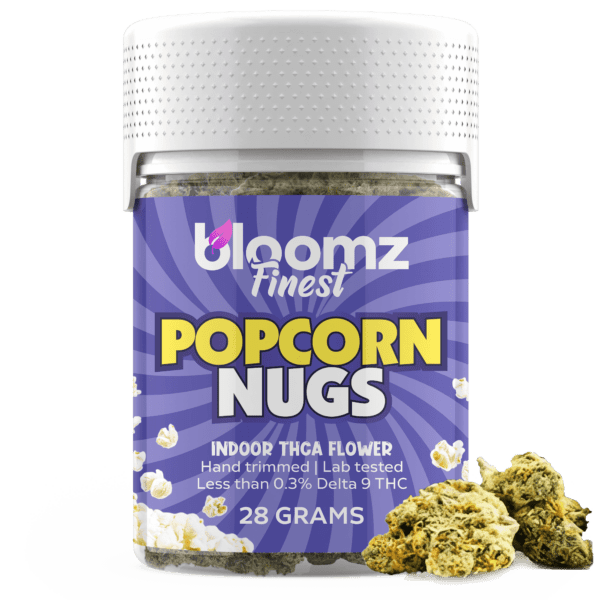In the modern exploration of botanicals and their derivatives, a fascinating dichotomy has emerged between scientific precision and ancient tradition. In one corner stands HHC flower, a product of sophisticated chemical engineering, designed for stability, consistency, and a uniquely smooth psychoactive experience. It is a testament to humanity’s drive to understand, refine, and even improve upon the molecules that nature provides. In the other corner, hailing from the millennia-old cultures of the Pacific Islands, is Kava.
This is not an engineered substance but a diplomatic brew, a humble root traditionally used to foster communication, resolve conflicts, and bind communities together in a state of clear-headed tranquility. The matchup between these two is a compelling narrative of intention—the engineer’s quest for a perfect recreational experience versus the diplomat’s need for a tool of social harmony.
To Buy HHC Flower Click Here
Recommended products
Why It’s Important to Breakdown the Matchup of HHC Flower vs. Kava
In a world brimming with options for altering one’s state of mind, the distinction between HHC flower and Kava is not merely academic; it is a fundamental choice of purpose. A detailed breakdown is essential because these two substances represent entirely different philosophies of use and deliver profoundly different results. To choose between them without a deep understanding of their unique profiles would be to ignore the user’s own core intention. Are you seeking a predictable, euphoric journey for personal recreation, or a gentle, lucid calm designed to enhance social connection? This comparison provides the clarity needed to answer that question and make a responsible choice that leads to the desired destination.
A thorough analysis is critical for any conscious consumer, as it illuminates the essential differences that define each of these powerful botanicals:
Engineered vs. Cultivated: HHC flower is a manufactured product, a testament to modern chemistry where a stable, semi-synthetic cannabinoid is infused onto a hemp plant. Kava is a product of ancient agriculture, a root that has been cultivated for thousands of years for its natural properties. This distinction between an engineered compound and a traditional whole-plant botanical is central to their character, safety considerations, and the experience they offer.
Psychoactive High vs. Lucid Serenity: The experiences they produce are on different planes of existence. HHC is unequivocally psychoactive, delivering a reliable and smooth “high” that is both euphoric and relaxing. Kava is celebrated for its ability to induce deep physical and mental calm while the mind remains remarkably clear and lucid. The choice is between a substance that alters consciousness and one that clarifies it.
Recreation vs. Connection: While both can be used in social settings, their roles are distinct. HHC is primarily a recreational tool, enhancing personal enjoyment of activities like listening to music or relaxing with friends. Kava’s entire history is rooted in its function as a social lubricant and a ceremonial facilitator of peace and communication—it is a tool for connection.
Navigating Separate Legal and Safety Mazes: Both substances require consumer diligence, but for different reasons. HHC‘s legality is a complex puzzle involving the Farm Bill, the Federal Analogue Act, and numerous state bans, with safety concerns centered on the purity of the chemical conversion process. Kava is broadly legal as a dietary supplement, but safety hinges on sourcing high-quality “noble” Kava to avoid the issues associated with inferior varieties. Understanding these separate challenges is key to safe and legal consumption.
Contender #1: HHC Flower
Stepping into the spotlight is our first contender, HHC flower, an intriguing and increasingly popular player in the vast arena of hemp-derived cannabinoids. HHC, or Hexahydrocannabinol, has carved out a unique niche for itself, attracting users who are looking for a balanced and smooth psychoactive experience that lands somewhere between the gentleness of Delta 8 and the intensity of traditional Delta 9 THC. What truly sets HHC apart, however, is its chemical backstory. It is a product of hydrogenation, a scientific process that enhances its stability, making it a robust and resilient cannabinoid. HHC flower is a prime example of modern innovation meeting consumer demand, offering a reliable and pleasant journey into a state of blissful relaxation for those willing to explore beyond the more common cannabinoids.
Hexahydrocannabinol (HHC) is a semi-synthetic cannabinoid that is created through a process called hydrogenation. To understand this, it’s helpful to start with its natural counterpart, THC. HHC is essentially a hydrogenated form of THC. The process is chemically analogous to how liquid vegetable oil is converted into solid or semi-solid margarine. In a laboratory setting, a THC molecule has its double bond in the top ring structure broken and saturated with hydrogen atoms, typically in the presence of a metal catalyst like palladium or nickel. This seemingly simple addition of hydrogen makes the molecule significantly more stable.
It becomes less susceptible to oxidation and degradation from exposure to heat, air, and UV light, which is why HHC products are known for having a much longer and more stable shelf life than products made with THC. This chemical robustness is one of its primary advantages. It’s also important to note that the manufacturing process creates a mixture of two different HHC molecules: 9R HHC, which actively binds to the body’s endocannabinoid receptors, and 9S HHC, which, due to a slight difference in its molecular structure, does not bind as effectively and is considered largely inactive. The ratio of these two isomers in the final product directly impacts its overall potency.
With this crucial scientific context, it becomes clear that “HHC flower” isn’t a strain of cannabis that a farmer can cultivate to be naturally rich in HHC but instead, it’s a manufactured, composite, and infused product. The process begins with high-quality, legally grown hemp flower, which is naturally rich in CBD (cannabidiol) and contains less than 0.3% Delta 9 THC. This beautiful, terpene-rich flower provides the physical structure, the aromatic compounds that create the flavor and smell, and a host of other minor cannabinoids. This foundational hemp flower then serves as the base which is meticulously infused or coated with a pure HHC distillate, the potent, honey-like oil created through the hydrogenation process.
This infusion process is what elevates the simple, non-intoxicating hemp flower into a potent, psychoactive product, delivering the unique and sought-after effects of HHC in a familiar, smokeable format. The quality and safety of the final product are therefore entirely dependent on two separate but equally important factors: the premium quality of the initial hemp flower and the verified purity of the HHC distillate with which it is infused.
Recommended products
The creation of a high-quality and effective HHC flower is a multi-stage process that requires a perfect marriage of expert agricultural practices and precise, high-level laboratory techniques. Each and every step in this complex chain of production is critically important to producing a final product that is safe, potent, consistent, and enjoyable for the end consumer:
Premium Hemp Cultivation: The process starts with the careful cultivation of high-quality hemp flower. Growers select strains known for their desirable terpene profiles and beautiful bud structure, ensuring the base for the product is of the highest caliber.
Harvesting and Curing: After the hemp plants mature, they are harvested, trimmed, and undergo a slow curing process. This is vital for preserving the delicate terpenes that give each strain its unique scent and taste, from citrus and pine to berry and diesel.
Extraction and Hydrogenation: In a separate, highly controlled laboratory environment, cannabinoids are extracted from hemp biomass. This cannabinoid extract (often CBD that is first converted to Delta 9 THC) is then placed into a pressurized reactor along with a catalyst, such as palladium or nickel. Hydrogen gas is introduced, which then saturates the cannabinoid molecules, converting them into HHC distillate.
Safe Purification: After the hydrogenation process, the raw HHC distillate must be carefully purified to remove any residual catalysts or chemical reagents. This is a critical safety step that distinguishes reputable manufacturers from irresponsible ones.
Flower Infusion: The pure, viscous HHC distillate is then evenly applied to the cured hemp flower. This is often done by lightly heating the distillate and spraying it onto the buds or by using a tumbling process to ensure a consistent coating.
Third-Party Lab Verification: The final, infused flower product is sent to an accredited third-party laboratory. The lab tests verify the potency of HHC (ideally including the ratio of active to inactive molecules) and, most importantly, screen for any harmful residual metals from the catalyst, ensuring the product is clean and safe for consumption.
The HHC flower on the market is available in several forms and categories, primarily distinguished by the quality of the base hemp flower and the convenience of the final product. This allows consumers to choose an option that best fits their budget and lifestyle. While the list of product types is extensive, it is important to remember that all of them begin with a simple hemp flower that is then enhanced with the power of HHC, a testament to the versatility of this innovative cannabinoid:
Indoor HHC Flower: This is the premium, top-tier option. It utilizes indoor-grown hemp flower as its base, which is celebrated for its dense, perfectly formed buds, vibrant colors, and rich coating of trichomes. The controlled growing environment allows for maximum terpene expression, resulting in a highly aromatic and flavorful product that provides the most enjoyable smoking or vaping experience.
Outdoor HHC Flower: A more accessible and budget-friendly choice, outdoor HHC flower uses sun-grown hemp as its base. While the buds may be less cosmetically perfect than their indoor counterparts, they can still be of high quality and offer a robust experience. This option is excellent for consumers who are more focused on the effects of the HHC rather than the connoisseur-level aesthetics of the flower.
HHC Small Buds: “Smalls” are simply smaller-sized buds of hemp flower that have been infused with HHC. These buds are often separated from the larger nugs during the trimming and sorting process. They contain the same potency and quality as the larger buds but are offered at a discount, making them a great value for those who plan to grind their flower.
HHC Moonrocks: For those seeking a high-potency experience, HHC moonrocks deliver. These are created by taking a nug of hemp flower, coating it in sticky HHC distillate, and then rolling the entire bud in a generous layer of CBD or CBG kief. The result is a dense, powerful product that is meant to be broken up and added to a bowl for a significantly intensified session.
HHC Pre-Rolls, Blunts & Joints: Offering the ultimate in convenience, pre-rolls are ready-to-smoke products made from ground HHC-infused flower. They are expertly packed into rolling papers (joints) or hemp wraps (blunts), eliminating the need for any preparation or accessories. Pre-rolls are a fantastic way to try a new strain or enjoy a quick and easy session on the go.
When shopping for HHC flower, you will encounter a wide variety of familiar strain names, such as Blue Dream, Girl Scout Cookies, or Green Crack. It is essential to understand that this strain name refers to the genetic profile of the base hemp flower that was infused with the HHC. The hemp plant has been bred into countless Indica, Sativa, and Hybrid varieties, each with a unique profile of terpenes that creates its signature aroma and flavor. The overall experience of smoking HHC flower is therefore a beautiful synergy between the specific character of the hemp strain’s terpenes and the consistent, balanced psychoactive effects of the HHC itself:
Indica: When an Indica-dominant hemp strain is used as the base for HHC Flower, the resulting product is geared towards deep relaxation and physical ease. Terpenes commonly found in Indica strains are often associated with calming and soothing aromas, like lavender or earthy spices. This aromatic profile complements the profoundly relaxing body sensation that HHC provides, making it an ideal choice for unwinding in the evening and achieving a deeply “chilled out” state.
Sativa: Using a Sativa-dominant hemp strain as the base aims to create a more uplifting and energizing experience. Sativa terpenes are known for their bright, citrusy, and zesty aromas that are thought to be mood-lifting and stimulating. When paired with the gentle, clear-headed euphoria of HHC, the result is a functional and positive experience that can be perfect for creative endeavors, social activities, or daytime use without the heavy sedation of an Indica.
Hybrid: Hybrid hemp strains are the versatile middle ground, bred from both Indica and Sativa lineage to offer a balanced profile. When infused with HHC, a hybrid base can create a “best of both worlds” experience. Depending on its specific genetic leaning, a hybrid HHC flower can provide a blissful wave of relaxation that is still mentally clear and uplifting, making it an incredibly adaptable option suitable for almost any time of day or occasion.
The legality of HHC flower in the United States is a topic of considerable debate and is perhaps even more complex than that of other hemp-derived cannabinoids. On one hand, it is derived from hemp and is not a traditional Delta 9 THC molecule, so proponents argue it is federally legal under the 2018 Farm Bill. Further complicating this is the fact that HHC is not technically a “tetrahydrocannabinol,” as the hydrogenation process removes the “tetra” (referring to the double bond). Some argue this places it outside the scope of laws targeting THC.
However, there are two significant legal challenges. First, many states have enacted broad bans on “all intoxicating hemp derivatives,” which would include HHC. Second, the Federal Analogue Act of 1986 states that any substance “substantially similar” to a Schedule I drug (like Delta 9 THC) could also be treated as a Schedule I drug. Because HHC is structurally similar to and produces similar effects as THC, it could potentially fall under this act. This leaves HHC in a precarious legal position, where its status is highly dependent on state law and evolving federal interpretations.
HHC flower is a versatile product that can be enjoyed through several different consumption methods, each offering a slightly different experience. The primary purpose of using HHC flower is to achieve a state of pleasant euphoria and relaxation, and the method chosen can affect the onset, duration, and overall character of this journey. Whether one prefers the classic ritual of smoking, the clean flavor of vaping, or the long-lasting effects of edibles, HHC flower can be adapted to fit the user’s preferences.
Recommended products
It is important to note that because HHC is created through a chemical process, sourcing flower from a reputable brand that provides comprehensive third-party lab tests is absolutely crucial to ensure the product is free from any residual metals or contaminants.
Vaping (using a portable or desktop vaporizer): Vaping is an increasingly popular method for consuming HHC flower. A dry herb vaporizer heats the flower to a precise temperature, turning the HHC and terpenes into an inhalable vapor without any combustion. This method is celebrated for being gentler on the lungs than smoking and for providing a cleaner, more robust flavor that allows the user to fully appreciate the terpene profile of the base hemp strain.
Smoking: The most traditional method, smoking HHC flower in a pipe, bong, or as a rolled joint provides a rapid and effective delivery of the cannabinoid. The effects are typically felt within minutes, making it easy to gauge the experience in real-time. The ritual of grinding the flower and packing a bowl or rolling a joint is a cherished part of the process for many cannabis enthusiasts.
Cooking/Baking: HHC flower can be used to create potent homemade edibles. Because HHC is already an active molecule (unlike THCA), the flower does not need to be decarboxylated before being infused into a fat like butter or coconut oil. This infused fat can then be used in any baking or cooking recipe. It is important to remember that edibles produce a much stronger and longer-lasting effect that can take up to two hours to fully kick in, so starting with a very small dose is essential.
The overall effects of HHC flower are often described by users as a delightful and balanced experience. In terms of potency, it is generally considered to be stronger than Delta 8 THC but slightly milder than traditional Delta 9 THC, placing it in a comfortable “sweet spot” for many consumers. The high is frequently reported as being very smooth, characterized by a wave of relaxation that soothes the body, accompanied by a clear-headed yet distinctly euphoric mental state. Many users appreciate that HHC tends to produce less of the mental raciness or unease that can sometimes be associated with high doses of Delta 9 THC, making it a more functional and less overwhelming option. The experience is often one of blissful contentment, a “chilled out” feeling that is perfect for enhancing social situations, creative activities, or simply unwinding at the end of the day.
Pros & Cons
HHC flower, with its unique chemical properties and balanced effects, presents a compelling set of advantages alongside some significant considerations. As a relatively new player in the cannabinoid market, it’s essential for potential users to weigh these pros and cons carefully. Its strengths lie in its stability and smooth experience, while its weaknesses are rooted in its legal ambiguity and the unregulated nature of the market.
Pros:
Balanced and Smooth Effects: HHC is widely praised for providing a psychoactive experience that is both substantial and manageable. It delivers a noticeable sense of euphoria and bliss that is often described as being more relaxing and less mentally intense than Delta 9 THC. This “sweet spot” of potency makes it an excellent choice for users who find Delta 8 too mild and Delta 9 too strong.
Exceptional Chemical Stability: The hydrogenation process gives HHC a unique advantage: an incredibly long shelf life. It is highly resistant to degradation from oxygen, heat, and UV light, meaning it will retain its potency for much longer than other cannabinoids. This makes it a reliable and durable product for both retailers and consumers.
The Argument for Federal Legality: Like other popular hemp derivatives, HHC’s market existence is predicated on the 2018 Farm Bill. Because it is derived from legal hemp and is not Delta 9 THC, it is sold as a federally compliant product. This has allowed it to become widely available in many parts of the country.
A Unique Legal Position: HHC’s legal status is particularly interesting because it is not technically a “tetrahydrocannabinol” or “THC.” This has led some to argue that it may not fall under laws specifically targeting THC isomers. While this is a contested point, it adds another layer to its complex but potentially favorable legal standing compared to other cannabinoids.
Wide Accessibility (Where Not Banned): In the many states that have not enacted specific bans, HHC flower is easy to find and purchase. It is sold by numerous online retailers who can ship directly to consumers, as well as in many physical CBD and smoke shops. This provides a legal psychoactive option for adults in areas without recreational marijuana.
Variety of Infused Strain Options: Because HHC flower is an infused product, manufacturers can use a vast array of different hemp strains as the base. This allows consumers to choose from their favorite Indica, Sativa, or Hybrid profiles, pairing the consistent effects of HHC with the unique flavors and aromas of a wide range of popular cannabis strains.
Promotes Potent Euphoria and Relaxation: Users consistently report that HHC is highly effective at producing a desirable state of being. It is known for its ability to induce a happy, euphoric buzz while simultaneously promoting a deep sense of physical relaxation. This makes it a versatile cannabinoid that is well-suited for both social enjoyment and personal unwinding.
Lower Likelihood of Causing Unease: Compared to the often-intense experience of high-potency Delta 9 THC, HHC is anecdotally reported to be much less likely to induce feelings of paranoia or unease. Its clear-headed nature allows users to enjoy the psychoactive benefits with a greater sense of calm and control, which is a major selling point for many.
Synergy with Base Flower’s Cannabinoids: The hemp flower used as the base for HHC products is naturally rich in CBD and other non-intoxicating cannabinoids. The presence of these compounds may contribute to a more balanced, well-rounded experience due to the “entourage effect,” where multiple cannabinoids work together to modulate the overall effects.
Available in a Wide Range of Product Forms: The HHC distillate used to make flower is also the key ingredient in a huge variety of other products. The popularity of HHC has led to a market filled with HHC vape cartridges, gummies, tinctures, and dabs, giving consumers a multitude of ways to enjoy this unique and stable cannabinoid.
Cons:
Complex and Uncertain Legal Status: Despite arguments for its legality, HHC exists in a significant legal gray area. The potential application of the Federal Analogue Act, combined with a growing number of state-level bans, makes its legal future highly uncertain. Consumers bear the risk of navigating these confusing and rapidly changing laws.
Lack of Regulation and Safety Concerns: The HHC market is not federally regulated, which creates a major safety concern. The hydrogenation process requires the use of heavy metal catalysts, and if a manufacturer does not perform a proper purification and provide comprehensive lab tests, there is a risk that these harmful metals could end up in the final product.
It is an Infused, Semi-Synthetic Product: For cannabis purists, the fact that HHC flower is not a naturally grown product is a significant drawback. It is a hemp flower that has been augmented with a cannabinoid created through a multi-step chemical process. This lack of natural authenticity is a major consideration for those who prefer whole-plant, unprocessed botanicals.
Risk of Failing a Drug Test: While there is some debate and anecdotal evidence on both sides, it is safest for consumers to assume that using HHC will result in a failed drug test for THC. The metabolites produced by the body after consuming HHC are likely very similar to those of THC, which would be flagged on a standard drug screening panel, potentially leading to serious employment or legal consequences.
Recommended products
-
THC-P HashHole Pre-Rolls – Cookies
$19.99$24.99 -
Exotic THCA Pre-Rolls Gold Line – 3-Pack/6 Pack
$36.99$69.99 -
THCA Pre-Rolls with THCA Diamonds – Cookies
$17.99$21.90 -
THCA Pre-Rolls | Diamond Heights – Extrax
$17.99$23.99
Contender #2: Kava
Our second contender, Kava, invites us on a journey to the tranquil, emerald islands of the South Pacific. Known to botanists as Piper methysticum, which translates to “intoxicating pepper,” this remarkable plant is not a fleeting trend but an ancient tradition, deeply rooted in the cultures of Oceania for millennia. Unlike cannabis, where the flower is prized, the power of Kava resides in its root system. For thousands of years, the people of Vanuatu, Fiji, Tonga, and Hawaii have prepared these roots into a ceremonial beverage that fosters communication, eases tensions, and strengthens community bonds. Kava enters the modern botanical arena not as a product of legal maneuvering, but as a cultural ambassador, offering a unique form of profound relaxation that stands in stark contrast to the psychoactivity of HHC flower.
At its core, Kava is a tropical shrub belonging to the pepper family, a relative of the common black pepper that seasons our food. The magic of the plant is concentrated in its roots, which contain a unique class of active compounds known as kavalactones. There are at least 18 different kavalactones that have been identified, with six of them—including kavain, dihydrokavain, and methysticin—being responsible for the majority of Kava’s signature effects. These compounds work in a complex synergy to produce a sense of calm, muscle relaxation, and well-being.
They are believed to interact with various neurotransmitter systems in the brain, including GABA pathways, in a way that quiets mental chatter and soothes the body. Critically, it is important to distinguish between “noble” and “tudei” Kava. Noble Kava varieties are those that have been cultivated over centuries for daily consumption, producing desirable effects with minimal negative side effects. Tudei (“two-day”) Kava is a wilder, more potent variety that is not traditionally consumed and is associated with more unpleasant, long-lasting effects. The global standard for quality and safety is to use only the roots of noble Kava.
The story of Kava is an epic that begins approximately 3,000 years ago in the volcanic archipelago of Vanuatu, which is widely considered to be its place of origin. From there, ancient seafaring Polynesians and Micronesians carried this sacred plant with them on their incredible voyages across the vast Pacific, introducing it to islands like Fiji, Samoa, Tonga, and Hawaii. In these societies, Kava—known as ‘awa in Hawaii and ‘ava in Samoa—became far more than just a relaxing beverage; it became the very heart of their social and spiritual lives. It was, and still is, prepared and consumed in solemn ceremonies to welcome honored guests, to negotiate treaties and resolve conflicts between villages, to inaugurate new chiefs, and to connect with the ancestral world.
The preparation itself is a ritual, traditionally involving the grinding or pounding of the root and mixing it with water. The communal drinking from a shared bowl, or tanoa, reinforces bonds of kinship and hospitality. European explorers, such as Captain James Cook in the 18th century, were among the first Westerners to document this profound tradition. Only in the last few decades has Kava journeyed beyond the Pacific, finding a new home in the West, most notably through the recent emergence of dedicated Kava bars that seek to replicate the plant’s communal and relaxing spirit.
Just as cannabis is known by its strains, Kava is distinguished by its geographical origin and the specific cultivars, or varieties, grown in those regions. The unique combination of a region’s volcanic soil, climate, and centuries of cultivation practices imparts a distinct character and kavalactone profile to the root. This results in Kavas that can have noticeably different effects, with some being more uplifting and cerebral (“heady”) and others being more profoundly relaxing and sedating (“heavy”). Exploring these regional varieties is a key part of the Kava journey, allowing enthusiasts to find the perfect cultivar to match their desired mood and social setting:
Vanuatu Kava: As the ancestral homeland of Kava, Vanuatu boasts the most diverse and potent varieties in the world. The Kava culture here is deeply ingrained in daily life, and the country has strict laws to protect the quality and export of only noble cultivars. Vanuatu Kavas, such as the famous Borogu or Melomelo, are renowned for being extremely potent and typically “heavy.” They produce profound muscle relaxation and a deep sense of calm that is ideal for unwinding in the evening and achieving a state of blissful tranquility.
Fijian Kava: Fiji is perhaps the most well-known producer of Kava for the international market. Fijian Kava, often made from the potent lateral roots known as “waka,” is celebrated for its balanced effects. It tends to be less sedating than the heaviest Vanuatu Kavas, offering a pleasant combination of mental relaxation and a gentle mood lift. This makes it a versatile choice, perfect for the solemnity of a traditional ceremony or a casual evening of conversation with friends.
Hawaiian Kava (‘Awa): In Hawaii, Kava is known as ‘Awa and holds deep spiritual significance within traditional Hawaiian culture. For centuries, it was used by kahuna (priests and experts) for prayer and to achieve states of inspired insight. Hawaiian cultivars, like the legendary Mahakea and Mo’i, are often described as being more “heady” than their counterparts from the South Pacific. They are known for producing a more cerebral and uplifting experience, promoting creativity and happy feelings while still providing a gentle bodily relaxation.
Samoan Kava (‘Ava): In Samoa, ‘Ava plays a crucial role in the highly structured fa’amatai chief system. The ‘Ava ceremony is a formal and solemn event that is central to Samoan cultural identity, used during important political, business, and family gatherings. Samoan Kava is typically well-balanced, fostering the calm and respectful demeanor required for these important occasions, making it an excellent social lubricant that encourages thoughtful dialogue.
Tongan Kava: Tongan Kava is often considered the most sociable of the regional varieties. It is typically milder in its effects compared to Kava from Vanuatu or Fiji, making it perfectly suited for long sessions of social drinking. In Tonga, groups of men often gather in kalapu (Kava clubs) to drink Kava for hours, talking, telling stories, and playing music. Its gentle, mood-lifting qualities make it the perfect accompaniment for fostering camaraderie and strengthening community bonds without being overwhelming.
The modern Kava market has evolved to offer a wide array of product types, making this ancient root accessible to a broad audience with varying preferences for convenience, taste, and preparation. While the traditional method of kneading ground root in water remains the gold standard for many purists, contemporary innovations have removed some of the barriers to entry, such as the time-consuming preparation process and the plant’s distinctively earthy flavor. This diversification allows newcomers and veterans alike to incorporate Kava into their lives in a way that fits their personal routines and tastes:
Powder: This is the most traditional form available outside of the Pacific Islands. The dried Kava root is ground into a powder, which is typically a “medium grind” consistency. This powder is not meant to be dissolved but rather steeped and kneaded in a bag of cold water to extract the oily kavalactones, creating the final beverage. For greater convenience, “micronized” and “instant” powders are also available. Micronized powder has been ground so finely that it can be mixed directly into a liquid, while instant Kava is a dehydrated beverage that dissolves completely, offering the easiest preparation.
Capsules & Tablets: For ultimate convenience and to completely bypass the taste, Kava is available in encapsulated powder or tablet form. These products offer a pre-measured dose and can be taken discreetly like any other supplement. However, the effects from capsules are often reported to be less pronounced than those from a traditionally prepared beverage, as the dosage is typically lower and the absorption process through the digestive system may be less efficient.
Gummies: Riding the wave of popularity for gummy supplements, Kava gummies are a new and user-friendly way to enjoy the plant’s benefits. These are infused with a specific amount of Kava extract and are flavored to mask the root’s peppery, earthy taste. Gummies are an excellent entry point for those curious about Kava, offering a familiar format, precise dosing, and a more palatable experience.
Drinks/Beverages/Shots: Capitalizing on the growing demand for relaxing alternatives to alcohol, ready-to-drink Kava products have become increasingly popular. These range from small, concentrated Kava shots to larger, canned Kava-infused seltzers and tonics. They are made with Kava extract and are often blended with other botanical ingredients and natural flavors, providing a quick, convenient, and often tasty way to enjoy Kava’s effects on the go.
Disposable Vape Pens: The concept of inhaling Kava through a vape pen is a very recent and highly controversial development. While some products are emerging that claim to vaporize kavalactones, this method is not traditional and its safety and effectiveness are largely unknown. There is no scientific research on the effects of inhaling heated kavalactones, and most Kava enthusiasts and safety advocates strongly advise against this method in favor of traditional oral consumption.
Tinctures & Extracts: Kava tinctures and extracts are highly concentrated liquid forms of the plant’s active compounds. Created by extracting the kavalactones from the root using a solvent like ethanol or CO2, these products are very potent. They offer the ability to take a strong dose in a small volume, and they can be added to other beverages. However, their potency requires extremely careful dosing to avoid uncomfortable effects, and they are generally recommended for experienced users who understand their own sensitivity to Kava.
Topicals: While not for internal consumption, Kava extract is also being incorporated into topical products like creams, lotions, and balms. The kavalactones are believed to have muscle-relaxing properties that can be absorbed through the skin. These topicals are used to target specific areas of the body, offering localized soothing and relaxation to tired muscles without producing any of the cerebral effects associated with drinking Kava.
A fascinating trend in the contemporary botanical market is the fusion of different plant-based compounds to create synergistic effects, and the combination of Kava with cannabinoids is at the forefront of this movement. Many companies are now creating products that blend Kava extract with various cannabinoids derived from the hemp plant, such as CBD, CBN, CBG, and even psychoactive ones like Delta 8 THC. The theory behind these formulations is that the different compounds can complement and enhance one another’s properties.
For instance, the well-known calming and soothing qualities of CBD might work in harmony with the muscle-relaxing and mind-quieting effects of kavalactones, potentially leading to a more profound and holistic state of relaxation. Similarly, combining Kava with a sleep-promoting cannabinoid like CBN could create a powerful nighttime blend for those seeking deep and restful slumber. These innovative products offer a curated experience that aims to deliver the best of both worlds, targeting specific desired states with a multi-pronged botanical approach.
While combination products offer a pre-formulated experience, many individuals prefer to combine Kava with different strains of cannabis flower in a more traditional, separate manner. This practice allows the user to act as their own alchemist, fine-tuning the experience by pairing the grounding effects of Kava with the unique psychoactive and aromatic profiles of their chosen cannabis strain. The interaction between the kavalactones and the specific blend of cannabinoids and terpenes in the flower can lead to unique and nuanced states of being. The choice of strain, like these ones below, becomes paramount, as each will paint the canvas of Kava’s calm with a different palette of colors, moods, and sensations:
Sativa: Combining Kava with an uplifting and energetic Sativa strain creates an intriguing dynamic. The Kava can provide a calm, centered base, potentially smoothing out the racier or more mentally intense aspects that some Sativa strains can produce. This pairing could lead to a state of being that is both mentally alert and creative, yet physically relaxed and free from restlessness. It might be an ideal combination for engaging in a creative project, deep conversation, or enjoying music with a focused but serene mindset.
Indica: Pairing Kava with a deeply relaxing Indica strain is a recipe for profound tranquility and physical ease. This combination is a powerful duo for deep relaxation, as the muscle-soothing properties of Kava are amplified by the classic “body high” effects of a strong Indica. This pairing is best reserved for the end of the day, as it can lead to a very sedating, “chilled out” experience that is perfect for watching a movie, listening to calming music, or preparing for a peaceful night’s sleep.
Hybrid: Using a balanced Hybrid strain alongside Kava offers a middle path, capturing the best attributes of both ends of the cannabis spectrum. A well-balanced hybrid can provide a sense of euphoria and mental uplift without being overly stimulating, which complements Kava’s mood-lifting qualities beautifully. The result can be a wonderfully blissful and grounded experience, a state of happy contentment where both mind and body are at peace. This versatile combination is suitable for a wide range of low-key recreational activities.
In the United States, the legal status of Kava is relatively straightforward and stable, especially when compared to the complex and shifting landscape of cannabis products. Kava is federally legal and is classified and sold as a dietary supplement. This means it can be legally bought, sold, and consumed in all 50 states without the need for a prescription. This legal clarity has allowed for the growth of a robust market, from online vendors specializing in imported Kava root to the burgeoning trend of Kava bars in cities across the country.
However, the industry is not without its history of regulatory scrutiny. In 2002, the FDA issued a consumer advisory regarding a potential risk of rare but severe liver injury associated with Kava-containing products. Subsequent research has largely attributed these concerns to the use of poor-quality Kava material, specifically the leaves and stems of the plant (tudei Kava) rather than the noble root, and the use of solvent-based extracts. In response, the reputable Kava industry has strongly advocated for the exclusive use of water-extracted, noble Kava root to ensure safety, a standard that has helped to reassure consumers and maintain its legal standing as a dietary supplement.
The overall effects of Kava are unique and are often described as being unlike any other botanical substance. The experience typically begins within minutes of consumption with a distinct tingling or numbing sensation in the mouth and throat, a harmless effect caused by the kavalactones that signals the root’s potency. As the effects set in, users report a wave of pleasant relaxation that washes over the body, soothing tired muscles and releasing physical tension. Mentally, the experience is one of pronounced calm and tranquility; the cyclical thoughts and worries of the day seem to quiet down, replaced by a sense of peaceful contentment.
A key and celebrated feature of Kava is that this deep relaxation is accompanied by a preservation, and sometimes even an enhancement, of mental clarity. Unlike alcohol, which can cloud judgment and slur speech, Kava allows for clear-headed and articulate conversation, making it an exceptional social lubricant. This is also why it has a reputation for fostering sociability and open dialogue. Another interesting aspect is the phenomenon of “reverse tolerance,” where new users may need to consume Kava several times before they begin to feel its full effects, after which they often become more sensitive to it.
Pros & Cons
Kava’s journey from a ceremonial root of the Pacific to a popular beverage in Western wellness circles comes with a distinct set of positive attributes and notable considerations. Understanding this balance is key to approaching Kava with the right expectations and respect. Its pros are deeply tied to its unique effects on sociability and mental clarity, while its cons are often related to its taste, preparation, and the importance of sourcing high-quality material.
Pros:
Widespread Legality and Social Acceptance: One of Kava’s strongest advantages is its clear legal status as a dietary supplement across the United States. This legality fosters a sense of security for consumers and has allowed for the growth of a welcoming and mainstream social scene. The rise of Kava bars provides a unique, alcohol-free environment for people to gather, socialize, and relax, which is a testament to its growing social acceptance as a legitimate and positive lifestyle choice.
Promotes Relaxation with Mental Clarity: The most celebrated benefit of Kava is its ability to induce deep physical and mental relaxation without compromising cognitive function. While the body feels calm and at ease, the mind remains clear, focused, and articulate. This unique combination makes Kava an excellent tool for unwinding without the fogginess or impairment that can accompany other relaxing substances, allowing for meaningful conversation and clear-headed introspection.
Rich Cultural and Ceremonial History: Kava is not a new invention; it is an ancient tradition steeped in 3,000 years of cultural significance. This long and storied history provides a deep context for its use, connecting modern consumers to the timeless human desire for community, peace, and spiritual connection. Engaging with Kava can be an educational and respectful way to participate in a tradition that has been cherished by Pacific Island cultures for countless generations.
Generally Considered Low-Risk for Dependence: When used responsibly in its traditional form, Kava is widely considered to have a very low potential for creating physical dependence. It does not produce the kind of compulsive redosing or escalating tolerance that is often associated with other substances. This favorable safety profile makes it a suitable choice for individuals seeking a relaxing botanical for occasional or moderate use without the significant concerns of habit formation.
Promotes Genuine Sociability: Kava is a powerful social lubricant. Its ability to lower inhibitions and quiet mental chatter without causing intoxication makes it exceptionally well-suited for fostering open and genuine communication. In a Kava circle or at a Kava bar, conversation tends to flow easily and thoughtfully. This makes it an outstanding alternative to alcohol for social gatherings where the goal is connection and camaraderie rather than loud revelry.
Diverse Range of Modern Consumption Methods: While traditional preparation can be a rewarding ritual, the modern market has made Kava accessible to everyone. The availability of instant powders, pre-measured capsules, flavored beverages, and gummies means that anyone can enjoy Kava’s effects regardless of their tolerance for its taste or their willingness to engage in the preparation process. This versatility ensures there is a Kava product to fit nearly any lifestyle.
Natural, Plant-Based Origin: For individuals who prefer botanicals in their natural state, Kava is an excellent choice. The final beverage, when traditionally prepared, is a simple water extraction of a raw, ground plant root. There are no complex chemical conversions or synthetic processes involved. This straightforward, earth-to-cup process appeals to many who seek a connection to simple, time-tested natural products.
Cons:
An Acquired and Often Unpleasant Taste: There is no sugar-coating the fact that traditionally prepared Kava has a very challenging flavor. Its taste is often described as earthy, peppery, and muddy, and it can be quite bitter. This strong and unusual flavor profile is the single biggest barrier to entry for new users. While it can be masked or bypassed with modern products, many purists believe that embracing the taste is part of the authentic Kava experience.
Traditional Preparation Can Be Cumbersome: To experience Kava in its most authentic and effective form, the traditional preparation method is recommended. This involves placing the ground root into a strainer bag, soaking it in a bowl of water, and then kneading and squeezing the bag for 10-15 minutes to extract the active kavalactones. While meditative for some, this process can be messy, time-consuming, and inconvenient for many people in a fast-paced modern lifestyle.
The “Reverse Tolerance” Phenomenon: A unique and sometimes frustrating aspect of Kava is “reverse tolerance.” Many first-time users report feeling little to no effect from the beverage, even at moderate doses. It can take several sessions over a number of days for the body to become sensitized to the kavalactones, after which the effects become much more pronounced. This can be discouraging for newcomers who are expecting immediate results.
Critical Importance of Quality Control: The Kava market is not all created equal, and the quality of the product is paramount for both safety and effects. It is crucial to source Kava from reputable vendors who only sell 100% noble Kava root and can provide third-party lab testing to prove it. The risk of accidentally consuming inferior “tudei” Kava, which can cause unpleasant side effects, or Kava contaminated with other parts of the plant, makes consumer diligence an absolute necessity.
Potential for Kava Dermopathy: With extremely heavy, long-term, daily consumption of Kava, a specific skin condition known as “kava dermopathy” can occur. This condition is characterized by dry, scaly, and sometimes flaky and yellowish skin. It is generally considered harmless and is reversible upon cessation or reduction of Kava use. While it is rare and only associated with very high levels of consumption, it is a known potential side effect of chronic, heavy use.
How to Go About Choosing Which Option
Choosing between HHC flower and Kava is a decision that requires a clear understanding of your own preferences, experience, and the specific kind of outcome you are seeking. These are not interchangeable products; they are distinct substances with unique characters, and the “better” choice is entirely dependent on the individual. By carefully considering the key differences in their effects, nature, and legal standing, you can make a confident and well-informed decision. This process is about aligning the product’s profile with your personal goals, ensuring a positive and responsible experience.
The first and most important consideration is the desired mental state. Are you looking for a reliable, smooth, and distinctly psychoactive “high”? HHC flower is designed to deliver a consistent euphoric and relaxing experience that is predictable in its character. Or are you looking for a more versatile botanical tool that can provide a deep, clear-headed relaxation for social connection or quiet contemplation without a traditional “high”? Kava’s profile is perfectly suited for this latter purpose. Your answer to whether you want a predictable high or a lucid calm will be your primary guide.
Next, consider the social context and product nature. Are you comfortable with a semi-synthetic, lab-infused product like HHC flower, which is excellent for personal recreation but not very discreet? Or do you prefer a raw, natural, agricultural product like Kava, which has a rich history as a social beverage and can be a wonderful, non-alcoholic centerpiece for a gathering of friends? Both unregulated markets require careful vetting of vendors for safety, but your preference for an engineered versus a traditional botanical, and for a recreational versus a social substance, will heavily influence your choice.
|
Feature |
HHC Flower |
Kava |
|---|---|---|
|
Product Nature |
Hemp flower infused with semi-synthetic, hydrogenated HHC distillate. |
Dried and powdered root of the Piper methysticum plant. |
|
Primary Active Compound |
Hexahydrocannabinol (HHC) |
Kavalactones |
|
Core Experience |
Consistently euphoric, relaxing, and clear-headed psychoactive “high.” |
Deeply relaxing with preserved mental clarity; promotes sociability. |
|
Key Feature |
High chemical stability and long shelf-life. |
Promotes social connection and communication. |
|
Legal Status |
Federally legal (disputed); banned in many states; Federal Analogue Act concerns. |
Federally legal as a dietary supplement; legal in all 50 states. |
|
Social Context |
Primarily for individual or small group recreational use. |
Excellent for social gatherings, conversation, and community. |
|
Safety Concerns |
Lack of research; risks of residual metal catalysts from hydrogenation. |
Sourcing noble vs. tudei varieties; quality control for contaminants. |
|
Origin |
Modern (1940s) chemical discovery, commercialized post-2018. |
Ancient botanical with centuries of traditional, cultural use. |
The Engineer’s Design vs. The Diplomat’s Tradition
In the end, the choice between HHC Flower and Kava is a reflection of intent. HHC is the engineer’s masterpiece, a molecule refined and stabilized to deliver a predictable, smooth, and enjoyable psychoactive performance, perfect for personal recreation. Kava is the diplomat’s traditional tool, a social brew that has smoothed tensions and fostered open communication for millennia, perfect for building connection. One is designed for a reliable escape into blissful feeling, the other for a clear-headed engagement with the people around you.
There is no superior option, only the one that best serves your purpose. Whether you seek the dependable flight of modern science or the grounding embrace of ancient tradition, may your choice bring you the experience you desire.
To Buy HHC Flower Click Here
Recommended products
-
THCA Flower – Indoor Exotics – Gold Line
$37.99$69.99 -
THCA Flower – Platinum Line
$49.99$79.99 -
THCA Flower – Mystery Reserve
$41.99$79.99 -
THCA Smalls
$149.99$256.99

